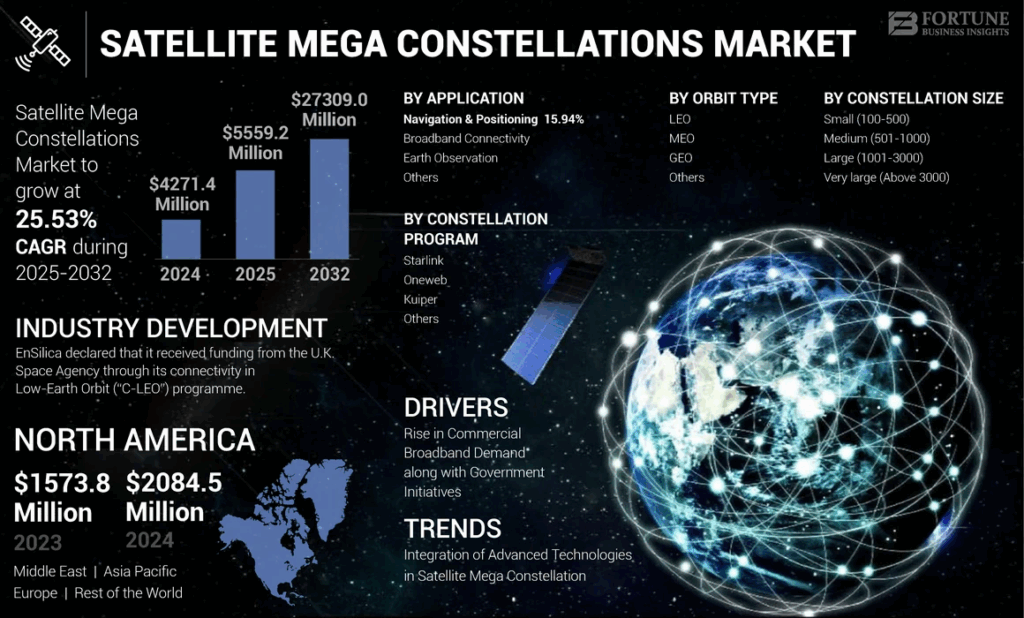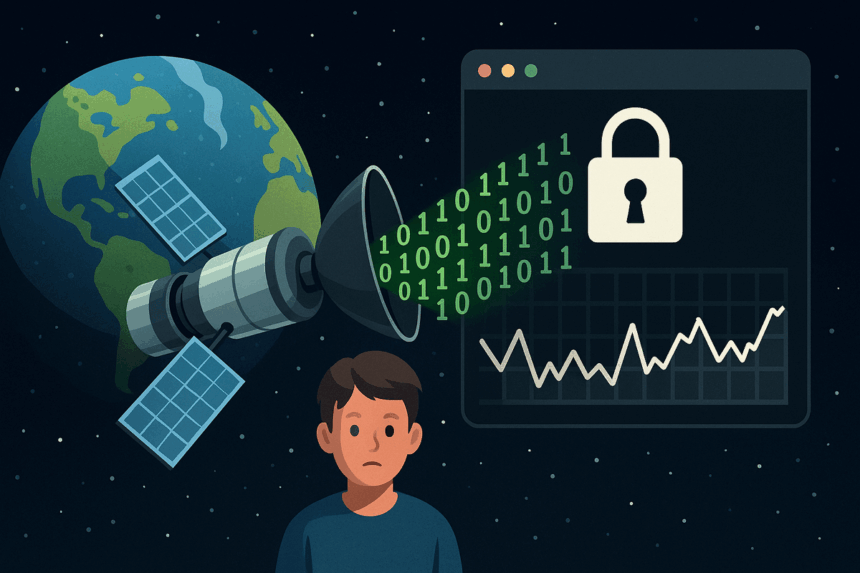Space Signals Leak Personal and Military Data
A $600 home setup exposes global satellite vulnerabilities. Researchers from the University of California, San Diego and the University of Maryland prove that intercepting satellite communications requires little more than a dish and a clear sky. Their study uncovers streams of unencrypted data from geostationary satellites orbiting above North America. Over seven months, the team captured private information from both civilian and military sources — including messages, phone records, and live ship locations, exemplifying how satellite data interception is worryingly feasible.
The discovery alarms experts who long assumed only state actors with advanced tools breach satellite links. The findings reveal just how fragile satellite security truly remains.
What’s Happening & Why This Matters
Open Signals, Open Secrets
The researchers tapped 39 satellites and 411 transponders used by major telecoms such as T-Mobile, TelMex, and AT&T. They found no encryption protecting vast amounts of sensitive traffic. This is a prime example of satellite data being vulnerable to interception.

Unprotected transmissions included text messages, call logs, and even browser histories. Some of the data came from U.S. military vessels and the Mexican government. They also discovered reports revealing deployment locations and administrative details for military networks.
Using an inexpensive TV satellite dish, receiver, and a tuner card, the researchers decoded all of it. “Anyone with a clear view of the sky and $600” could access the same streams, they wrote.
Blind Spots
The study identifies a dangerous gap between expectation and reality. While users assume satellite networks safeguard their information, operators often skip full encryption, leaving opportunities for satellite data interception wide open.
European Space Agency (ESA) data shows around 12,500 active satellites orbit Earth. Among them, about 590 GEO satellites sit 36,000 kilometres (22,400 miles) above the planet. Many handle global telecommunications and weather monitoring.
Standard practice demands encryption before transmission. Yet the intercepted signals lacked protection even at the radio layer, where mobile devices usually secure their data before sending it to towers.
The report states: “There is a clear mismatch between how satellite customers expect data to be secured and how it is secured in practice.”

Why Companies Skip Encryption
Satellite providers cut corners to save bandwidth and reduce fees. Encrypting data at the link layer increases costs and decreases throughput. Some operators claim encryption can reduce available bandwidth by 30 per cent, hurting profits while increasing the risk of satellite data being intercepted.
Others avoid licensing fees tied to encrypted satellite terminals and hubs. The shortcuts leave users — and even governments — exposed.
An Illusion of Difficulty
Despite the alarming results, researchers note that intercepting satellite signals still requires technical understanding. To decode data from multiple satellites, one must align the dish precisely and interpret the raw traffic.
Still, the ease of the researchers’ method contests long-standing assumptions. Sophisticated cyber tools are no longer the exclusive domain of intelligence agencies. Simple hardware exposes the invisible backbone of global communication, showing the feasibility of satellite data interception.
TF Summary: What’s Next
The discoveries force a reckoning for the telecom and defence sectors. Satellite operators must upgrade encryption or risk mass surveillance and data theft from low-cost ground setups, effectively combatting satellite data interception.
MY FORECAST: Expect tighter international oversight of space-based communications and new standards from agencies like ESA and the U.S. Federal Communications Commission. As low-Earth and GEO satellites multiply, securing data transmissions is non-negotiable. The sky no longer hides secrets — it broadcasts them.
— Text-to-Speech (TTS) provided by gspeech


